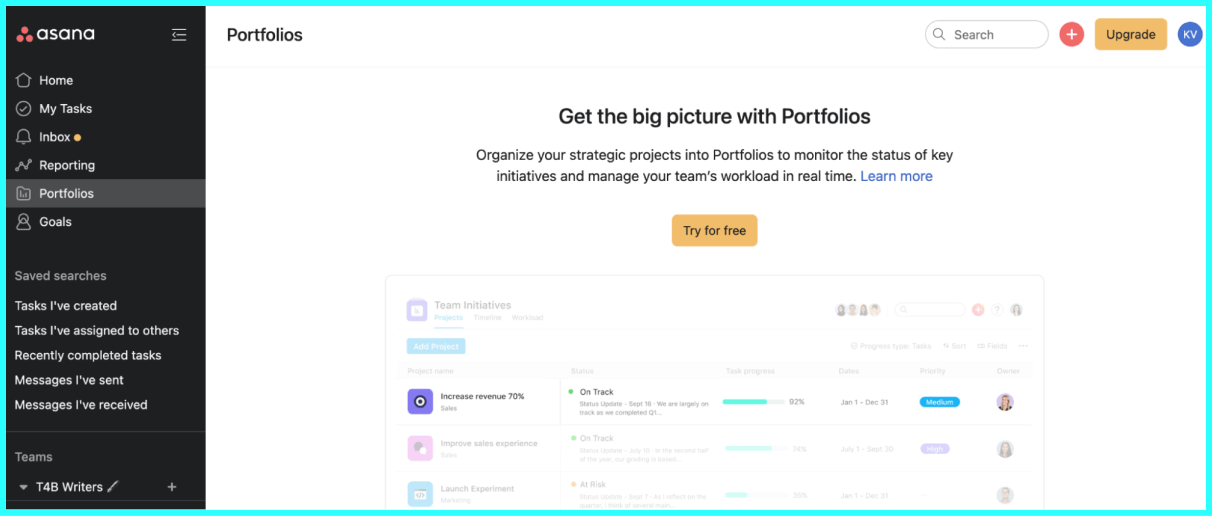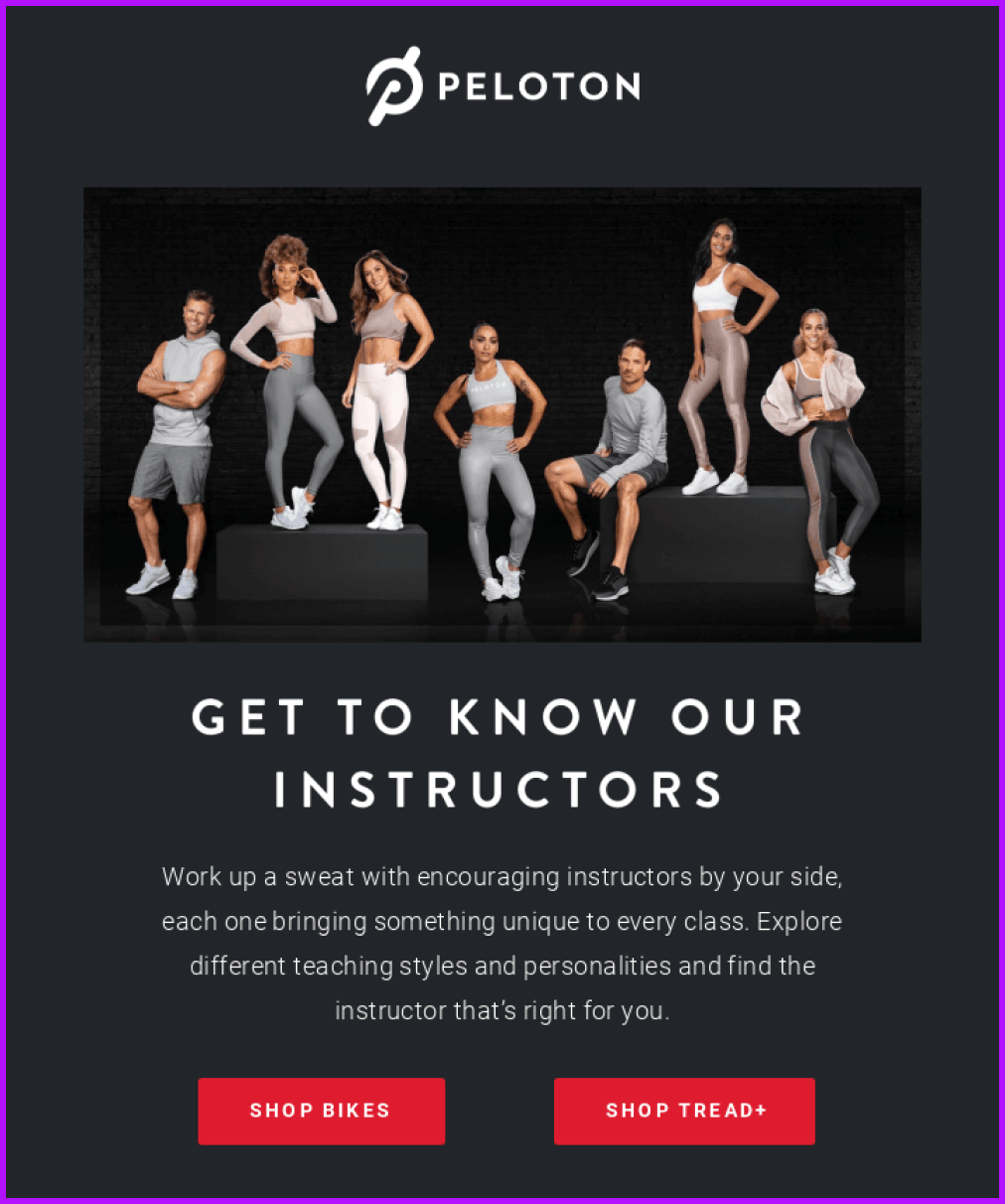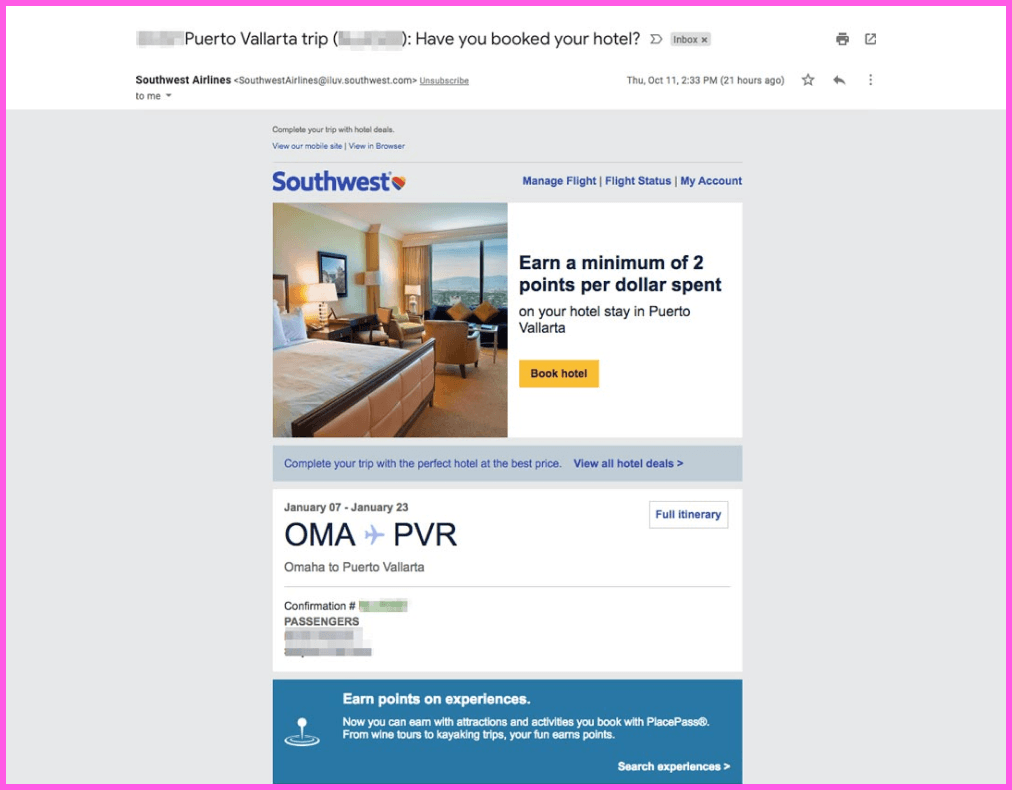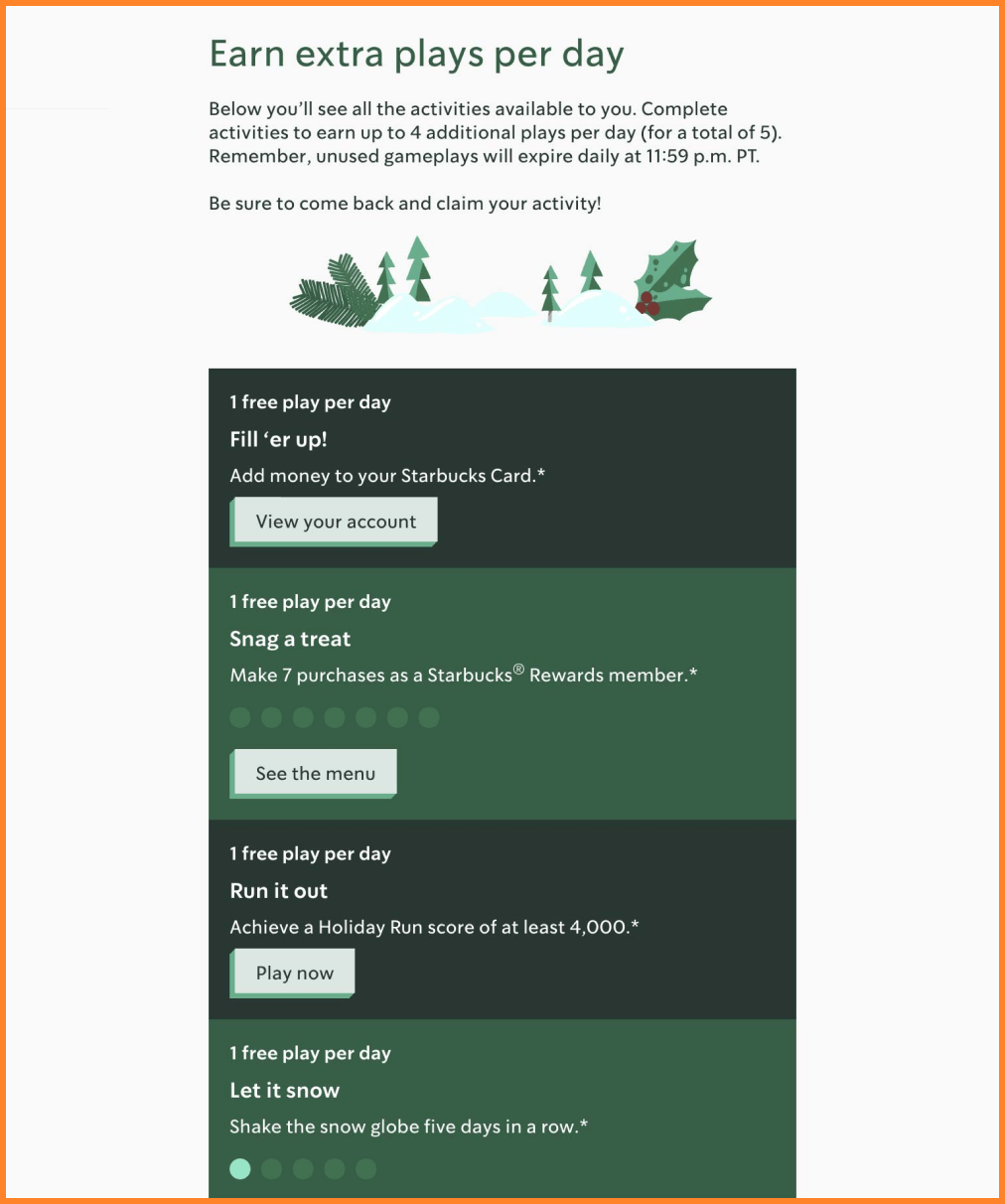If your marketing strategy goes out the window once you’ve closed the deal, you’re leaving some serious cash on the table.
Because your existing customers are your biggest supporters. And retention, loyalty, and advocacy are essential if you want to set yourself up for lasting success.
That’s what customer lifecycle marketing is all about.
Customer lifecycle marketing is a strategy that businesses use to foster relationships with their existing customers. So, instead of leaving customers to outgrow your products, you work to make sure that your brand continues to be a part of their journey.
In this article, we’ll explain what customer lifecycle marketing is, how it works, and what it looks like in action.
What Is Lifecycle Marketing?
Lifecycle marketing is a strategy that is designed to move customers through each stage of the customer journey, focusing especially on deepening the post-purchase customer relationship to ensure long-term loyalty and repeat engagement.
While much of marketing focuses on lead generation and building momentum to get to the sale, it’s equally important that you think about what happens after.
Since you’ve spent weeks (maybe even months) nurturing these customers down the funnel, don’t abandon them once they’ve made their purchase. Instead, take a holistic, cross-functional approach so that you’re delivering a consistent experience across the entire customer journey.
Customer lifecycle marketing teams can do this by working in collaboration with your support, account management, and product teams. As a result, not only will your entire experience feel like it’s part of one brand, but you will also boost your customer retention and expansion rates.

The Customer Lifecycle Stages
Developing a customer lifecycle model requires you to plan your content, advertising, and promotional strategies around your company’s unique post-purchase funnel.
To do this, you’ll want to establish a strategy based on each of the customer lifecycle stages and tailor your messaging to the touchpoints within each stage. Here’s a quick breakdown of all the customer lifecycle stages:
1. The Demand Generation Stage
While customer lifecycle marketing focuses on the post-purchase funnel, it’s important that you understand all of the stages of the customer journey. Before customers make a purchase, they need to be sold on your product — which is where demand generation comes in.
In this stage, customers tend to go through three broad phases:
- Awareness: For buyers at the very beginning of the buying journey, the awareness stage is when buyers learn who you are and what you do. For instance, the buyer may have a problem they’re looking to solve but not know that you are the brand to solve it. Marketing at this stage focuses on making a great first impression and introducing your brand and solution through tactics like content marketing, PR, social media, and paid search.
- Consideration: Once a prospect has engaged with you in some way, they move into the consideration stage. This is often the longest stage of the pre-purchase funnel as you have to continually educate prospects on the value that you can create for them. Here, your marketing should be all about building trust — so engage in tactics like nurturing buyers through emails, offering up downloadable white papers and ebooks, and hosting events.
- Decision: At this point, your buyer is weighing their options and coming to a decision about which brand they will be giving their business to. Here, prospects will likely spend their time combing through reviews, reading up on different features and pricing options, and trying to determine which company offers the most compelling value proposition. To ensure your brand is the one they choose, you can provide testimonials and case studies, retarget buyers with paid ads, or directly engage them in a call or chat.
2. The Purchase Stage
The purchase stage represents that crucial moment when a buyer becomes a customer. And while this means you don’t have to do as much work as you would before or after the purchase, you still need to make sure your buyers feel confident in their decision.
Here, you want to address any questions or concerns your buyers may have. Some things your team will need to consider include:
- What do buyers need to know before making a final decision?
- How is your product better than what your competitors offer?
- What’s in it for the buyer? And why should they purchase now?
- How can the buyer make the most out of their purchase?
Having a smooth purchase process sets the stage for the rest of the customer experience, so make sure that you’re always putting your buyers first. This way, you can build the foundation for a strong customer relationship.
3. The Onboarding Stage
Now that you officially have a customer on your hands, you want to get them started with your product as quickly as possible. This is where you set expectations, while also sticking to the promises and commitments you made during the buying process.
The onboarding stage is the perfect time to reiterate the value of your product and brand to your new customer. The key is to be responsive and informative to ensure your customer knows how exactly they can use your product.
The worst thing you can do at this stage is to leave your customer hanging, asking, “Now what?” So partner with your support team to ensure your customers have all the resources they need to successfully complete your product onboarding.
4. The Adoption Stage
The adoption stage is where so many customers get stuck (or worse, bounce.)
That’s what makes adoption such a crucial stage in the customer journey. At Drift, we know if someone doesn’t log into our product a certain number of times in the first month, it’s going to be much more difficult to move them through the next phases.
That’s why your goal at this stage is to encourage your customer to use your product and help them get as much value out of your brand as possible. Remember, your customer has to fall in love with your product before they’ll even consider going deeper with you — so proactively work with them so they understand how your product can best meet their needs.
5. The Expansion Stage
Depending on who your customers are and what products you offer, expansion can take a few different forms. But generally, it involves strengthening your relationships with customers in some way — whether that’s a customer upgrading to a more comprehensive plan, adding more seats, or bundling multiple products together.
In order to get existing customers to buy more from your brand, you’ll need to create dedicated messaging that drives home why they should upgrade or expand on the products they’re currently using. A few questions to consider here are:
- Why should the customer purchase another product from you?
- What do customers love the most about your brand?
- What other options might your customer be using or considering?
- Would your products benefit other teams at your customer’s company?
Of course, you don’t want to jump into the expansion stage straightaway. Depending on your product lifecycle, you may start upselling and cross-selling to customers as early as 30 days after purchase or further in, such as past the six month mark. Either way, you’ll want to work with your account management and sales teams to figure out how and when to jump into the expansion stage.
6. The Retention Stage
The retention stage, also known as the renewal stage, is where customer loyalty is truly put to the test.
We often think about retention only around the time of a contract renewal. But if you’ve done the earlier stages right, you’ll have already planted the seed for a successful renewal by showing customers their early results, re-establishing the value of your product, and encouraging them to try doing more with your product.
A successful renewal comes down to proving to your customers that your product is essential to helping them achieve their goals. That’s why, during this stage, focus on reminding the customer why they bought your product in the first place and drive home the results they’ve achieved.
Here, you’ll again want to partner with your account management and sales teams to prove all the successes that your customer has seen with your product so that they’ll eventually choose to stick with your brand.
7. The Customer Advocacy Stage
At the “end” of the customer lifecycle (in quotes as, ultimately, the goal is that your relationship with the customer doesn’t end) you have advocacy.
This stage is the most elusive of all, but by building up your relationships throughout the entire customer lifecycle, you’ll have created the right conditions for customer advocates to emerge. Because, as long as your customers are happy with your product and brand, they will be willing to share their positive experiences with others.
So, provided that everything is set up right and you continue to put your customers first, your customers can become your biggest brand advocates — and their advocacy will ultimately help drive more leads and generate brand awareness.
Having a hard time keeping track of your entire customer journey? Learn more about how you can visualize the customer experience with our blog on customer journey mapping.
Lifecycle Marketing Strategies by Stage
A solid lifecycle marketing strategy takes the entire customer journey into consideration. After all, you want to create consistency across the funnel so that, no matter where a customer is in their journey, they have a great experience.
While you’re likely already familiar with many of these strategies, we’ll break down how you can use them intentionally at each step of the customer lifecycle, especially post-purchase. Here’s how you can engage customers at each lifecycle stage and help move them along to the next.
The Purchase Stage
The purchase stage is that final moment in the buying process where your customer is either signing a deal or moving through a checkout flow. Either way, your goal here is to decrease friction wherever possible while keeping a light touch. A few strategies include:
- Retargeting: With paid ads, you can give your buyers the nudge they need to commit to making a purchase. By using high-intent keywords and phrases — like “buy X online” or “where to buy X” — you can reach the small group of buyers ready to take action.
- Abandoned cart emails: If a buyer has a product left in their cart for a long period of time, send them an email to remind them about it. You can include customer testimonials or even a discount in your email to sweeten the deal.
- Chat: On high-intent pages, like your pricing page, you can set up a custom chatbot that instantly connects site visitors to your sales team for a conversation. With notifications, your sales reps can also jump into chat when a target accounts lands on your site, which means you can engage buyers in real time when your brand is actually on their mind.
The Onboarding Stage
While in the onboarding stage, your goal is to be as hands-on as possible to make sure your customer doesn’t end up with “buyer’s remorse.”
This means it’s important that your customers have the support they need to get started with your product. A few ways you can do that include:
- On-demand training: In an ideal world, you’ll be able to have one-on-one meetings with every new customer to walk them through your product — but sometimes it’s hard to get a meeting on the books. By offering on-demand training, your customers can get acquainted with your product and learn tips and best practices on their own time. (Check out Drift Insider+ to see what that looks like in action.)
- Welcome package: While you might not be able to do this with everyone, sending personalized direct mail is a great way to start your relationship with a new customer. You can include some goodies and swag to welcome them, and maybe even add a written note from their account manager to make them feel extra special.
- Personalized emails: Keeping up communication is key — and the more personalized it is, the better. So instead of just delivering product tips to new customers, send an email whenever a customer hits an onboarding milestone, like receiving a certification, adding a new user, or completing a task a certain number of times.
The Adoption Stage
The goal for the adoption stage is to demonstrate value as quickly as possible. That’s because today’s customers are not shy about switching brands if another company provides a better deal, product, or customer experience.
One of the best ways to drive adoption is to engage your customers by providing resources that drive home the value of your product. There are two different ways to think about marketing strategies for adoption:
- Time-based: This approach is about engaging customers based on how much time has passed for them. For instance, you can have your account managers send a tailored message to celebrate customer milestones (like passing the 30-day mark). You can also deliver content, like blogs or webinars, that further educate customers on your product.
- Event-based: This is where you engage customers based on their behavior within your product, such as the number of logins or the way they are using your product. Using this approach will allow you to deliver relevant messaging and resources that help expand on their usage of your product.
The Expansion Stage
Expansion is where all of your attention from the previous stages can really pay off. To make your expansion efforts successful, your customer needs to trust your brand and your product — which takes time. Not every customer will be eligible for expansion, so you’ll have to pick and choose carefully.
Generally, expansion takes three forms:
- Upsell: This is where you encourage customers to adopt additional features or upgrade to a higher-tiered product. Here, the key is to listen to your customers so that you’re able to recommend relevant ways they can get more value out of your product. You can make these recommendations during ongoing conversations, like a meeting, or with in-product nudges and behavioral triggers on emails.
- Cross-sell: Unlike upselling, cross-selling is about recommending companion products which synergize with the product the customer is currently using. Again, you want your messaging here to be based on the way that your customer uses your product.
- Account penetration: If your product works for more than one use case within an organization, you can use your existing contacts to start the sales process with a different team or recommend adding more seats to the product they already have.
The Retention Stage
While retention naturally comes up every time a contract is up for renewal, you’ll have a hard time retaining customers if you’re not proactive in your marketing efforts. This means you want to engage with customers frequently and ensure they’re getting the best possible experience with your product.
Here are some ways you can keep in touch with your customers in order to drive retention:
- Celebration: Anytime a customer hits a milestone or accomplishes a big goal, be sure to celebrate it. While you can do this through automated emails, having your account manager send a personalized message will help build a stronger connection with your customers. And this doesn’t have to be limited to milestones in your product — you can also congratulate your customers on an acquisition or the opening of a new office.
- Check-ins: Schedule check-ins every six months so your customers have a place to ask questions and discuss any concerns they have. Not only does this make you a better partner for your customers, but you can also use these check-ins as an opportunity to restate the value of your brand.
- Customer resources: Send regular product updates, curate how-tos, and build additional content specifically so that your customers can learn the ins and outs of your product. Make sure that the content is relevant to how that customer specifically uses your product.
The Customer Advocacy Stage
91% of B2B buyers say that their buying decisions are influenced by word-of-mouth. That’s why customer advocacy is golden — and though few customers become advocates, the ones who do can make an enormous difference in your bottom line.
Advocacy looks different depending on your business, but there are small ways you can ask customers to help advocate for your brand:
- Content marketing: Invite customers with a high CSAT or NPS to join you on a podcast or webinar, or write a guest post on your blog. They can either talk about how their business works with your brand or serve as a knowledge expert in their particular field.
- Reviews: Ask customers to leave reviews both on your own site and on third-party aggregators.
- Case studies: Profile your customer to create an in-depth narrative about the successes they have seen with your product so that you can share it with future buyers and fellow customers. Bonus points if they’re willing to put their name on it.
- Customer advisory board: The more you listen to your customers, the better your products will be. Consider adding long-time customers to a customer advisory board where you can solicit feedback. Or set up a system in the product itself so that customers can send feedback around the clock.
5 Examples of Effective Lifecycle Marketing
Need some inspiration as you start diving into customer lifecycle marketing? Well, you’re in luck. We’ve pulled some of our favorite customer lifecycle marketing examples to help you get started:
1. Mailchimp
Since 2001, Mailchimp has become one of the biggest players in the email marketing space. Originally branded as an easy-to-use alternative for small business owners, Mailchimp grew quickly with a freemium model and customer-centric practices. Today, they have more than 14 million users and are still known as a quirky, do-it-yourself kind of platform.
That ethos extends to their loyalty program, Mailchimp & Co. It’s designed for freelancers and agencies with clients who build email marketing programs with their platform.

Members can access special content to help them better use the product and grow their business, while also earningrewards for using new features.
Not only does this create a growth loop for Mailchimp (more clients signed up = more users), but it also gives them an opportunity to deepen their relationship with their customers in a more natural way than just upselling or cross-selling.
2. Asana
Project management powerhouse Asana is the kind of sticky product that does plenty of lifecycle management on its own. (Can you imagine switching to another platform after you’re all organized? Shudder.)
But Asana takes things a step further, by leveraging in-app messages to prompt users to get more advanced features. After all, what better time is there to upsell your product than when your customer is actually on your platform?
For example, Asana gates two of their most popular features: Portfolio and Workload. This is because, realistically, someone who is just starting out or has only a few users is not going to want these more complex features.
But, as customers mature with their product, the more these features will make sense for them. That’s why anytime a customer clicks on those features within the platform, they will see a page that explains what they’re missing out on and encourages them to upgrade.

3. Peloton
Few companies have better engagement and adoption programs than Peloton. Why?
Because Peloton keeps their riders invested in their brand through a detailed gamification program. Not to mention that they also create subcommunities for their riders to interact with each other — whether that’s based on demographics (like #pelotonmoms) or instructors (like Cody Rigsby’s #boocrew).
That’s what makes this “Get to Know Our Instructors” email a great way to increase adoption.

Most riders gravitate towards one or two instructors they love — and the more instructors they like to take classes with, the more likely they’ll be to use their Peloton bike.
Plus, many instructors also teach classes for running, strength-building, and rowing — so fostering that connection between users and instructors gives Peloton an easy way to invite users to try out new classes and products.
4. Southwest
Booking a flight isn’t the be-all and end-all of planning a vacation — and Southwest uses this fact to their advantage.
In this example, Southwest sends a personalized follow-up email to the customer regarding an upcoming flight while also encouraging them to make use of their exclusive deals to book a hotel.

If the customer hasn’t already made arrangements for the trip, this is an easy win for Southwest, as it locks in the upsell.
Additionally, this email highlights the airline’s loyalty program which allows customers to earn points on experiences that are booked through them. Again, not only does this work as an effective upselling strategy, but it also encourages customers to book their vacations through Southwest in the future.
5. Starbucks
There’s a reason that Starbucks is the gold standard for customer loyalty programs. The Starbucks app, combined with personalized emails and free offers, provides users with a seamless experience that spans both the physical and digital worlds.
One example of this is their recurring holiday campaign, Starbucks for Life. This gamified campaign never fails to keep Starbucks-lovers engaged with the prospect of winning branded goods, loyalty points (stars), airline tickets, or — for the truly lucky — free Starbucks for the next 30 years.
Since customers need a Starbucks Rewards account to play, this immediately helps drive more sign-ups. In addition, while the game doesn’t require purchases to play, it does encourage it by offering extra plays that will boost a customer’s chance of winning the prize they want.

Final Thoughts on Customer Lifecycle Marketing
It’s impossible to keep a leaky bucket full.
Yet, when marketing teams don’t pay attention to the full customer lifecycle, that’s what they’re attempting to do — constantly filling up a bucket that they know will leak, and leak, and leak.
But building an effective customer lifecycle marketing strategy is an antidote to that. Because as long as you focus on building and reinforcing your customer relationships, your customers will continue to choose your brand above all others, which means you will be able to reduce churn and grow your revenue reliably.
Want to learn how Drift can help you build a personalized customer journey that drives retention and expansion? Check out our ebook, The Ultimate Guide to Customer Expansion and Retention for Revenue Teams.